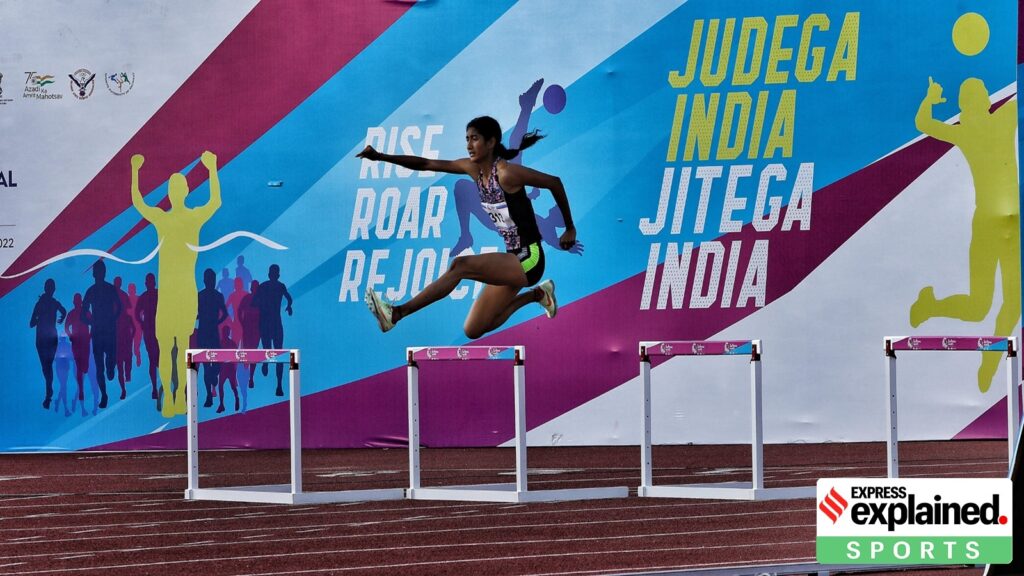National Sports Governance Bill features: The National Sports Governance Bill, introduced by Sports Minister Mansukh Mandaviya in Lok Sabha on Wednesday (July 23), proposes two major changes in the way sport is governed in the country.
One, formation of a National Sports Board with sweeping powers to lay down rules and oversee the functioning of federations, including the Board of Control for Cricket in India (BCCI).
Two, setting up a National Sports Tribunal with powers of a civil court to decide a range of disputes from selections of athletes to federation elections. Appeals against Tribunal decisions shall lie to the Supreme Court.
Why was a Bill like this needed?
The need for a sports regulator was mentioned by the Draft Comprehensive National Sports Policy 2007. The National Sports Board has proposed a SEBI-type body to establish a unified national structure for sport. (The Securities and Exchange Board of India is the statutory regulatory body for the securities market.)
Many of the provisions and structures in the Bill owe their origin to the National Sports Development Bills that were drafted, but not passed, in the early part of the last decade. You can draw a straight line from these to significant portions of the Bill.
With a National Sports Board, the regulatory capacity of the government in sports will increase. The institution will have a budget and can hire specialised staff with legal and auditing expertise, for instance, to evaluate how the 56 National Sports Federations and their affiliates are being run.
There has been frequent judicial intervention in sport.
In the absence of legislation, the Sports Code of 2011 has been the administrative instrument to establish standards for the government’s recognition of National Sports Federations. In the absence of statutory backing and regulatory institutions, this was always going to be a stopgap measure, and the history of its implementation has indeed been chequered.
Story continues below this ad
This regulatory failure led to extensive judicial intervention in the affairs of sports bodies, especially with many federations being obviously run quite poorly. However, many court cases have remained unresolved for years; in some cases, courts have themselves walked back judgments.
Numerous federations are being run by ad hoc bodies, and almost every federation election is now challenged in court. This is not sustainable.
The end goal of judicial intervention is public interest. While cleaning the [Augean] stables is a means, the desired end must always be healthier sports institutions.
We are presuming that the Tribunal will stay independent and free of conflicts.
Indeed, many will say ‘oh, not one more tribunal!’ when many of our tribunals have not been successful. But while this will be a first for sport in India, standalone dispute resolution chambers and tribunals is the model followed in sport globally.
Story continues below this ad
Having time-bound procedures and sports-aware people in dispute resolution is preferable to keep sport healthy and moving forward. Of course, any tribunal will need well-qualified, independent-minded members.
Is there a similar concern for the National Sports Board?
The powers proposed to be vested in the Board have always been there with the Sports Ministry. Having the Board as a statutory public institution with a defined role and obligations will increase public scrutiny and transparency on how these powers are exercised.
The other type of public transparency comes through information about sports bodies. It is currently not easy to identify the appropriate district sports federation for a particular sport. For someone who wants to play the sport competitively, or someone who would like to hold an event or sponsor or partner, it is often difficult to determine which body to deal with.
The Bill proposes that the Board will register all affiliated units of the NSFs. This step of ‘governance through information’ by the Board can lead to ‘governance through standard-setting’ – like SEBI does with listing standards – and ‘governance through framework alignment’ whereby the system comes together to work in unison.
Story continues below this ad
Why has the age limit for administrators been raised to 75, and tenures done away with?
It has been argued that various concessions are needed to enable more Indian administrators to be on international sports bodies, in leadership positions. It has been suggested that it takes time and experience to understand the administration locally, and to then establish oneself internationally.
Such perceived benefits must be balanced with the obvious risks of entrenchment and institutional capture. It is important to tread carefully.
The BCCI has so far not been under the government. How does that change?
I don’t know the government’s formal position on this, but it has been reported that the intention is for the BCCI to also come under the ambit of the law, even though it has never been recognised as an NSF thus far.
A material change will be with regard to existing age and tenure clauses. The BCCI constitution allows a maximum of three terms of three years each in the BCCI or a state association after which an office bearer cannot be elected again.
Story continues below this ad
Another question is whether the BCCI becomes an Indian Olympic Association (IOA) member given the inclusion of the sport in the forthcoming Olympics.
Does the Bill take away the right of athletes to go to court for redressal of their grievances?
According to the Bill, the first port of call for disputes is the internal dispute resolution chamber, followed by the Tribunal in appeal. This is in line with international sports dispute resolution structures. For instance, in the FIFA system, all participants from players to clubs are barred from approaching the ordinary courts in any country. You have to use the FIFA or member association dispute-resolution chambers, and appeals lie only to the Court of Arbitration for Sport (CAS).
A mature sports dispute-resolution process is deliberately intended to be kept separate from the court structure. Keeping dispute resolution accessible, financially viable and fair to athletes will be a critical aspect of good governance.







